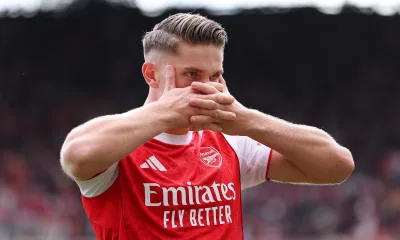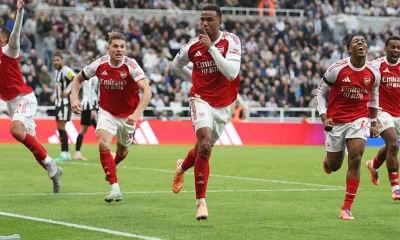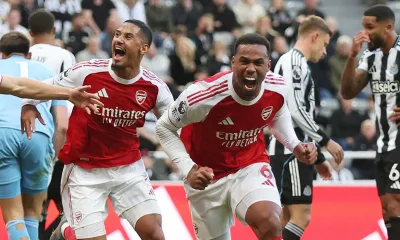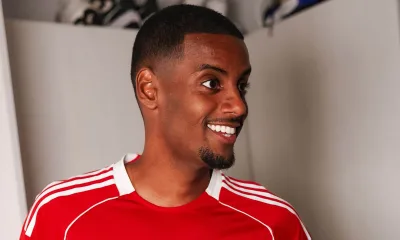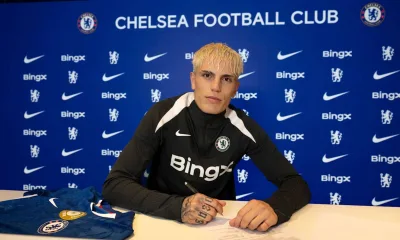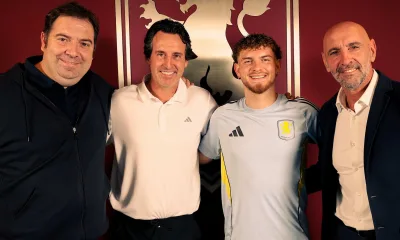Arsenal
Arteta: Saka’s Withdrawal Was Planned and Not a New Injury Concern
Arteta says Saka’s early exit against Port Vale was planned and not due to a fresh problem. No issue
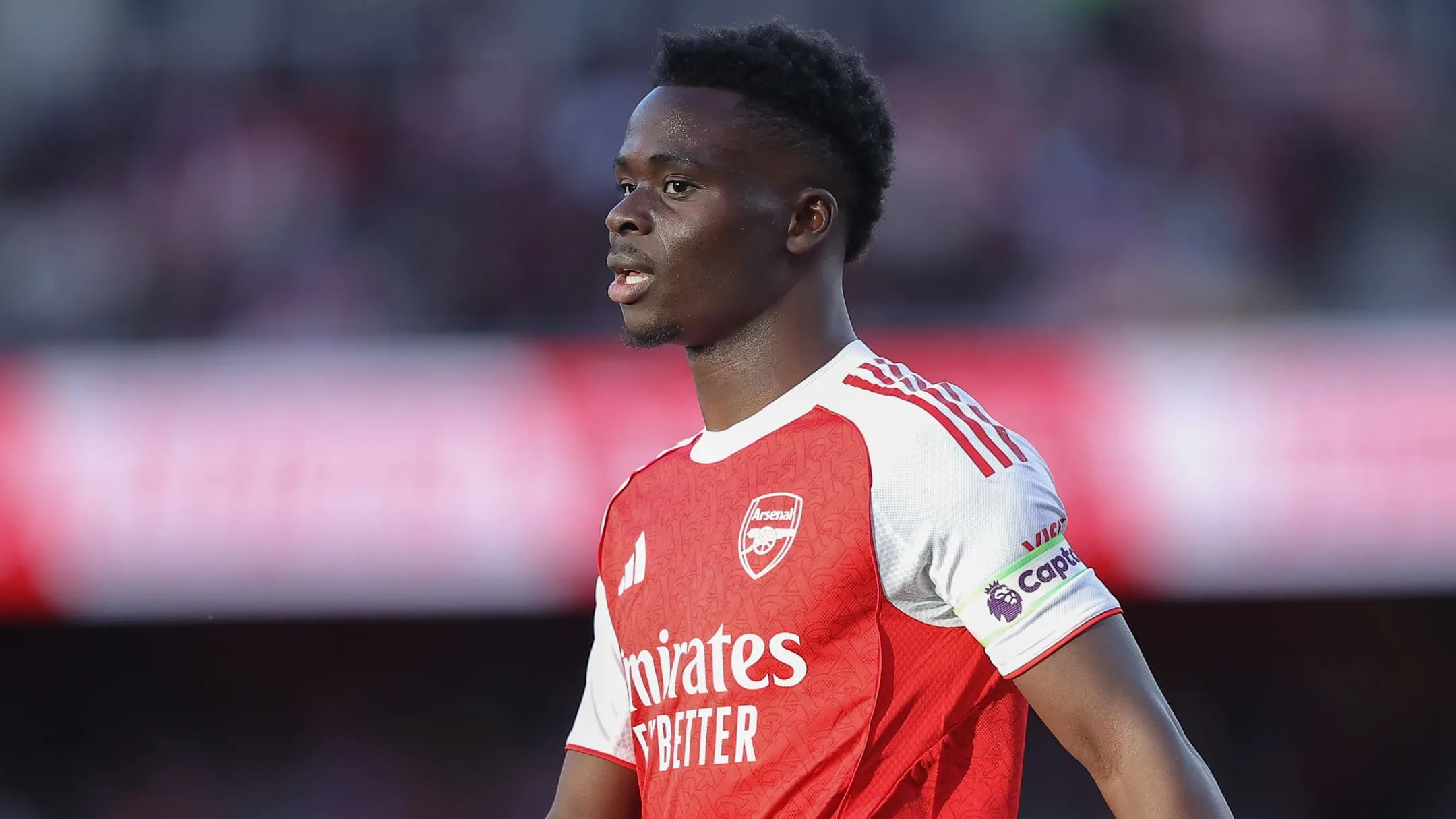
Arsenal manager Mikel Arteta confirmed Bukayo Saka’s substitution against Port Vale was pre-planned and not the result of a fresh setback. Saka left the game shortly after the hour mark, a decision Arteta said was intended to protect the winger as he returns to full fitness.
“Yeah, it was always the plan,” Arteta said of Saka’s hour-mark exit. “The maximum we wanted him to play was 60 minutes; there is a lot of games coming up.
“He is coming back from an important injury, and again we need to manage his load.”
Arteta reiterated that the decision was precautionary and tempered immediate concern over Saka’s availability. When asked whether Saka would be considered for Sunday’s trip to Newcastle United, Arteta was clear: “He will be around for the weekend, yes.”
The update is welcome given Arsenal’s current injury list. Noni Madueke faces around two months on the sidelines, creating a further short-term strain on squad options. Kai Havertz injured his knee just days into the campaign and is still facing “months” on the sidelines. Club captain Martin Ødegaard is also managing a shoulder problem, though Arteta said he expects the Norway international to return in the coming weeks.
Arteta’s comments framed Saka’s exit as load management rather than a new medical concern. With a congested schedule approaching, the manager appears determined to protect key players returning from prior injuries while monitoring recovery timelines for others in the squad. The club will assess fitness across the group in the days before the Newcastle match, but the immediate message from the manager was one of cautious optimism over Saka’s condition.
Arsenal
Martinelli backs Gyökeres to hit 30-40 goals with Ødegaard supplying the creativity
Martinelli says Gyökeres could score 30 or 40 goals as Ødegaard’s creativity creates clear openings
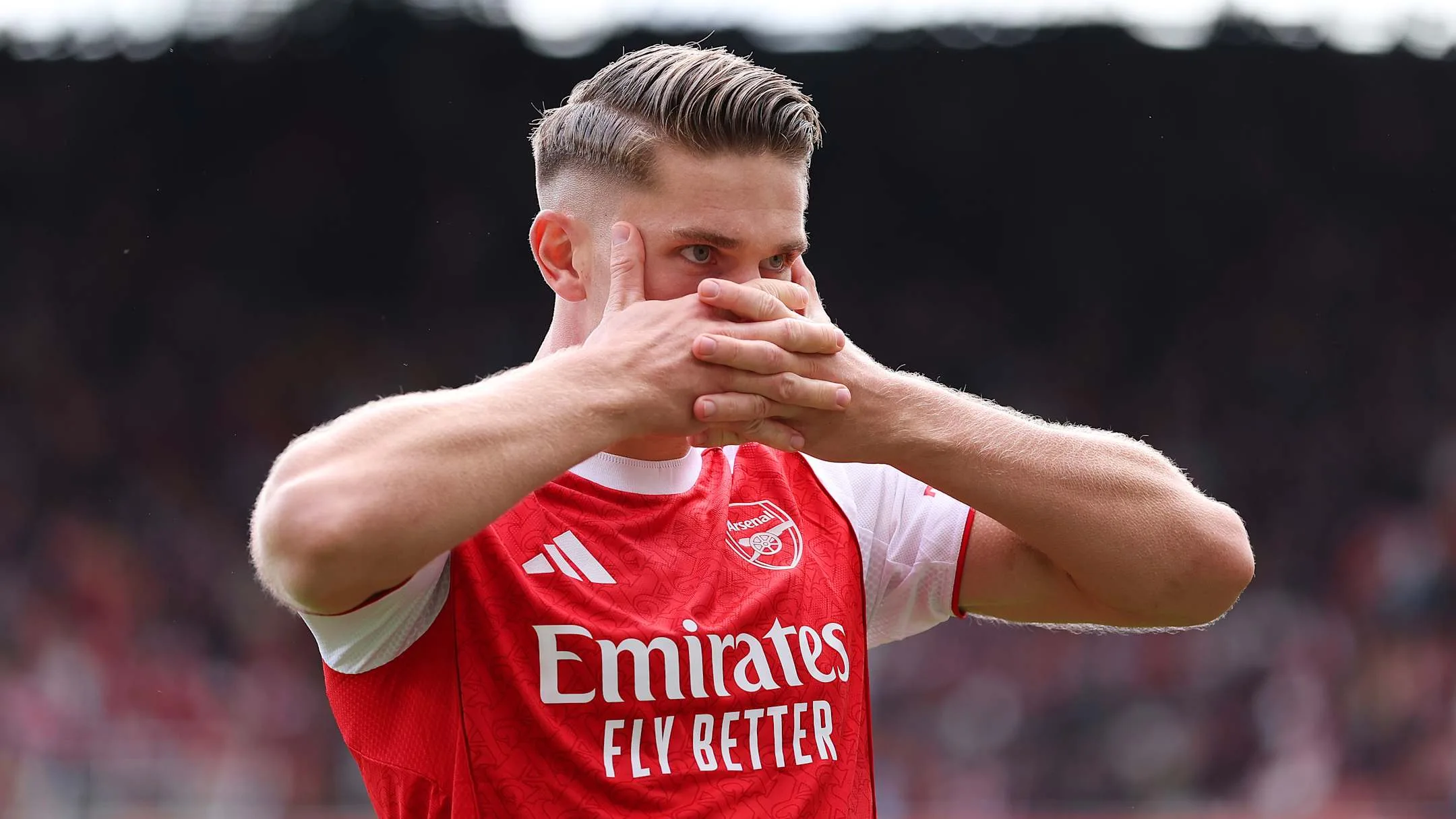
Gabriel Martinelli has publicly backed Viktor Gyökeres to reach the high double figures this season, suggesting the Swedish striker could finish with “30 or 40 goals a season.” Martinelli pointed to the influence of Martin Ødegaard as a decisive factor in that projection after Arsenal’s Champions League victory over Olympiacos.
The towering 27-year-old has proved a handful for central defenders even when not scoring, something that was underscored by his performance in Arsenal‘s 2–0 win over Olympiacos in the Champions League on Wednesday. Gyökeres outmuscled both Olympiacos centre backs in the build-up to Martinelli’s opener, finishing the game with three shots, 0.47 expected goals and seven touches in the opposition penalty area.
Bukayo Saka was also on the scoresheet midweek but it was Ødegaard who was the standout performer, with Martinelli believing the Norwegian will boost Gyökeres’ goalscoring numbers in his debut term. The forward’s physical presence and movement were highlighted as complementary to Ødegaard’s ability to find team-mates in dangerous positions.
“We are really happy with [Gyökeres], we trust him, we know his qualities and he’s one of the top strikers in the world right now,” said Martinelli after the victory.
“We trust him and we are trying to give him the confidence to score and to do his best on the pitch to help us. It’s really good to play with Martin there because he’s always trying to find you, when we make the movement.
“And for Viktor as well, his qualities as well, as he likes to go in behind and attack the opposition’s box. I think him playing with Martin as well is going to be good for him. We are going to try to give him the ball as much as possible to make him score, I don’t know, 30 or 40 goals a season.”
Martinelli’s assessment rests on Gyökeres converting chances that are created by Ødegaard and others, and on the striker maintaining the form shown against Olympiacos.
Arsenal
Arteta confident Gabriel will recover after precautionary withdrawal vs Olympiacos
Arteta: Gabriel expected to recover after being withdrawn vs Olympiacos; West Ham fitness watch plan
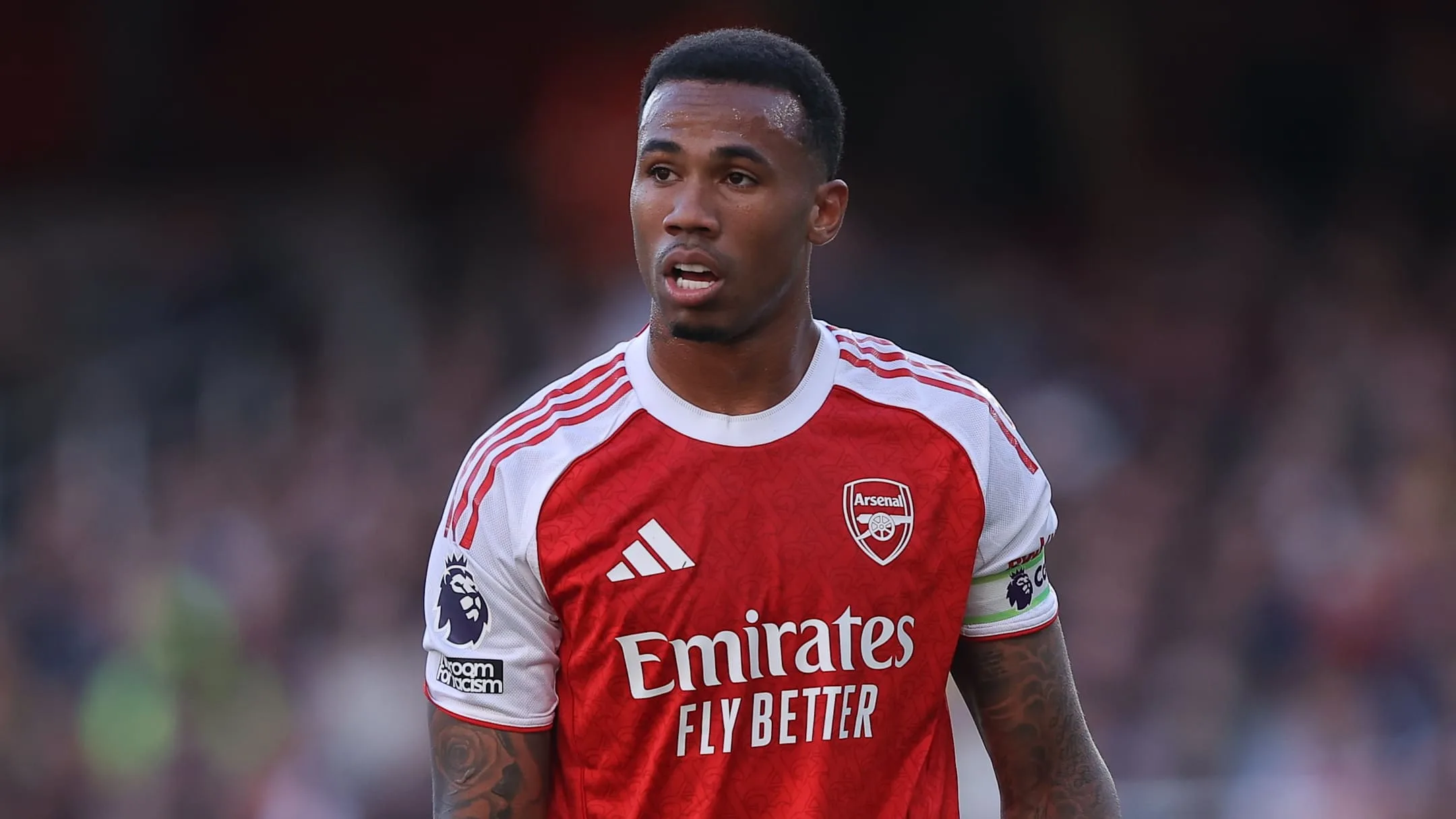
Mikel Arteta sought to calm concern over Gabriel Magalhães after the centre back was withdrawn during Arsenal’s victory over Olympiacos. The manager described the substitution as a precaution and indicated the issue is not expected to be serious.
“I think he’s going to be OK,” Arteta explained.
Arteta said the problem stemmed from a first-half challenge. “I think it was a kick, in the first half, and it was a bit uncomfortable. He could carry on but we decided not to take any risks because he’s played a lot of games. He’s coming back from a long-term injury and we need to look after him.” Those comments underline a cautious approach given Gabriel’s recent long-term layoff and his heavy workload since returning.
Despite the reassurance, Arsenal face a short wait to confirm whether Gabriel will be available for Saturday’s Premier League meeting with West Ham United. The Brazilian has played every minute of league action so far this season, following a hamstring injury that ended his 2024–25 campaign in April, so any enforced absence would halt that run.
Arsenal’s defensive options provide cover. Cristhian Mosquera replaced Gabriel alongside William Saliba when the change was made, and Riccardo Calafiori can also operate centrally despite being used primarily on the left in England. Piero Hincapié remains out with a groin issue; while his setback is not expected to be lengthy, the Ecuador international will not be fit for Saturday’s game.
Arteta’s handling of Gabriel’s withdrawal reflects a priority on long-term fitness over short-term gain. With rotation and alternatives available, Arsenal will monitor the centre back closely ahead of their domestic fixture, balancing the desire to maintain an unbeaten run of appearances for Gabriel against the need to manage his recovery following a significant prior injury.
Arsenal
Webb: VAR Was Right to Overturn Arsenal’s Penalty Appeal
Webb rejects Arteta’s call after VAR showed Pope brushed the ball, explaining why no foul was given.
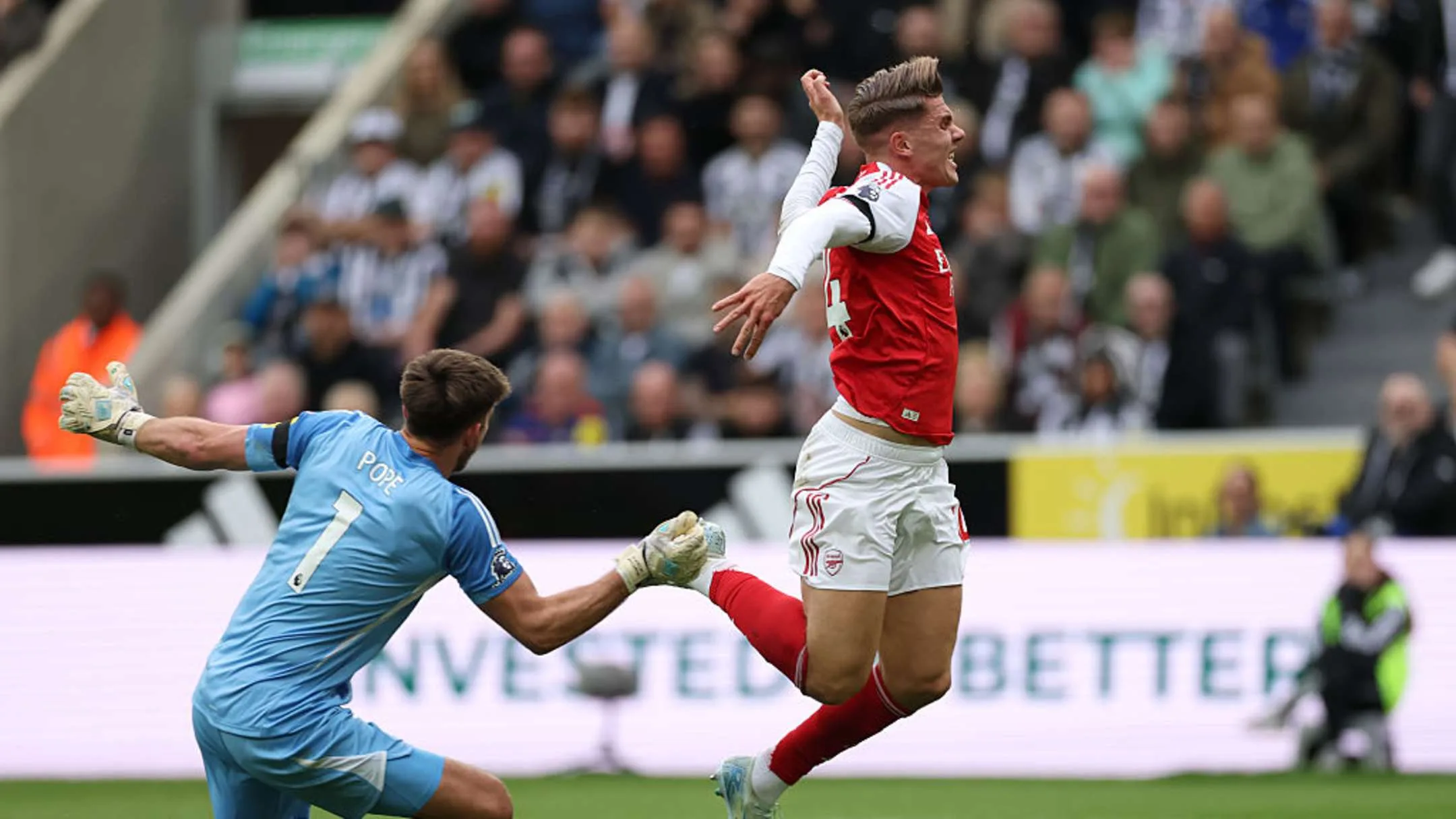
Howard Webb has publicly disagreed with Mikel Arteta’s criticism of a non-penalty decision after Arsenal’s late 2–1 victory over Newcastle United. The incident occurred when Gyökeres rounded Newcastle United’s goalkeeper Nick Pope midway through the first half. Arsenal argued for a penalty after contact was made, but Webb says the VAR intervention showed the full sequence.
“There was an important part around this in that the referee didn’t recognise that touch by Pope in real time,” Webb explained on Match Officials Mic’d Up .
Webb outlined the process that led the VAR to recommend a review and why the referee then went to the pitchside monitor.
“Hence the reason that when the VAR saw it, he deemed it to be a clear and obvious error because that touch by Pope hadn’t been seen, and therefore the referee could go to the screen to look at that really important aspect and make a judgement for himself, and the judgement was: I’ve seen the touch, therefore it’s not a foul, and I’m going to start with the drop ball.”
Supporters of Arsenal pointed to the sending off of Robert Sánchez for Chelsea against Manchester United earlier this season, where Sánchez also made contact with the ball before connecting with a forward, Bryan Mbeumo. Webb rejected the comparison and described key differences between the two incidents.
“Pope then plants his foot on the ground. He doesn’t drive it forward into Gyökeres,” Webb said. “There’s a gap, clearly a gap, between the two players after Pope has played the ball, and then the two players come together quite normally. The action by Pope is normal. It’s not reckless. It’s just a kick out towards the ball. The ball deviates.
“No contact on the player until the ball has been played away, and then the contact happens fairly normally. So, not a foul, and therefore a good use of the VAR to intervene to show the referee what really happened.”
Webb’s explanation concentrates on the sequence of touch, the referee’s initial lack of sight, and how VAR restored the correct on-field decision.


